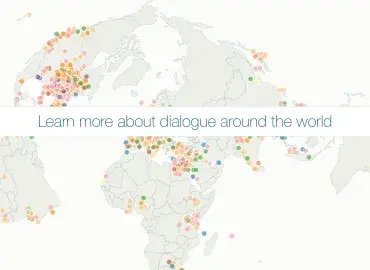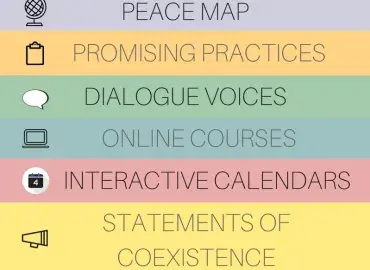Walter Kemp is Senior Director for Europe and Central Asia at the International Peace Institute
The peace mapping project was new for us all. The challenge for the International Peace Institute (IPI) was to put into context inter-religious dialogue (IRD). We wanted to show that there are vulnerable regions in the world, and global trends that we should all be aware of. But we didn’t want to dwell on conflict or fragility – there are plenty of maps about that already. Instead, we wanted to show that there are groups engaged in building peace and enhancing resilience, particularly – in the case of this project - through inter-religious dialogue.
Luckily we knew two brilliant French cartographers, both called Phillippe. They produced a number of fantastic thematic maps that illustrate risk and resilience in original ways. This complemented information about several hundred groups that are involved in IRD.
Because there is a strong focus on development at the moment due to the Sustainable Development Goals (SDGs), it was decided to use the Human Development Index as a backdrop. There are further variables that could be taken into account when explaining the characteristics of states. We hope that in the future more layers can be added to show an even richer picture of diversity.
We also wanted to drill down to a regional level. The Philippes therefore produced a number of great maps that show the types of indicators that affect stability, governance and development. Such maps can help to identify and explain risk factors, and – if updated regularly – could provide early warning to motivate groups engaged in IRD to get involved in volatile regions at an early stage in order to help prevent or mitigate conflict.
A problem that we encountered when trying to draw more detailed maps is the dearth of sub-national data, in other words information from specific municipalities and regions. Most data is collected at the national level. This can lead to a distorted picture if there are certain challenges in one part of a country but not another. Perhaps in the future, as more information becomes available and is disaggregated, it will be possible to have a more granular analysis.
The peace map is a work in progress. Its biggest asset is that it is a unique platform for highlighting the work of organizations involved in IRD. Hopefully they, and others that are not yet on the map, will provide a steady supply of fresh information to ensure that the map remains up-to-date and dynamic.
There is plenty of scope for more features, thematic maps, and information on the types of situations in which IRD is needed. Depending on the ambition of KAICIID, this map could continue to grow.
Since interreligious dialogue is not in most policymakers’ toolkits, it is important to explain to a broad public the need for, and importance of, inter-religious dialogue. In that respect, we hope that this project can help, dare I say, put interreligious dialogue on the map.
As world leaders prepare to adopt the “2030 Agenda for Sustainable Development” at a 25-27 September Ministerial Summit in New…
The International Dialogue Centre (KAICIID) today launched an online database of…

![[file:field-file-image-alt-text]](/sites/default/files/styles/features_940_630/public/kemp-new-118.jpg.webp?itok=0OFjUo3o)

